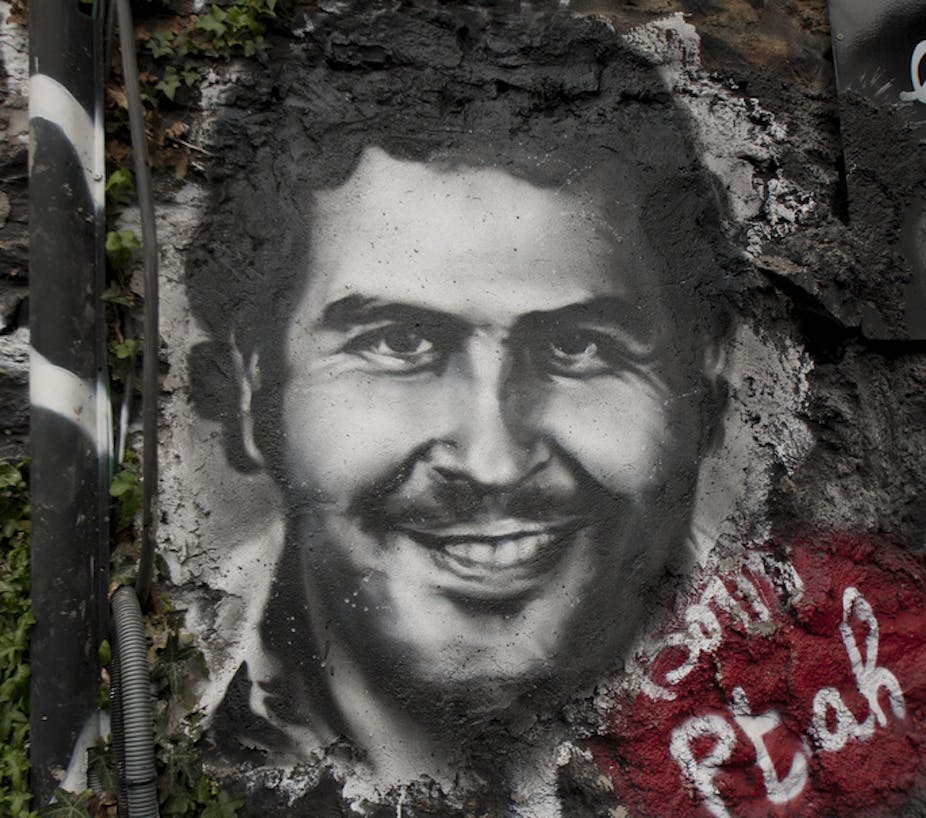Even today, some 20 years after his death, there is still debate in Colombia on how to interpret the mythology surrounding feared drug lord Pablo Escobar and his Medellín Cartel.
Escobar was regarded as one of the most powerful and ruthless entities within Latin America. He is also renowned for his “philanthropic” tendencies, channelling revenue earnt from engagement in the coca trade back into the Medellín community, influencing control of the area.
The myth is further exacerbated by Escobar’s success in being elected to the Colombian Congress in 1982 while also planning both the Avianca Flight 203 and DAS Building terrorist attacks, which took place in 1989. With the complexity surrounding his cartel’s seemingly contradictory actions and tactics, this movement was not a traditional drug trafficking organisation.
However, Escobar’s death also marked the beginning of the end for the Medellín Cartel in Colombia. The legacy of the cartel has had varying consequences for the fight against militant groups in the region today, including the immediate impact of the coca industry’s demonopolisation in Colombia as a result of the cartel’s dismantlement.
A worrying trend is emerging in which similar groups in Latin America are beginning to accumulate the same wealth, “prestige” and power that Escobar’s cartel once held. These groups are engaging in the drug industry while using terrorist tactics, obtaining sophisticated weaponry and directly or indirectly controlling territory.
Particularly in light of a huge cache of missile warheads seized in Jamaica likely en route to the region last week, the pressing issue is how best to deal with these emerging militant actors.
Post-Escobar: the demise of one cartel, and rise of many
After fleeing his custom-built prison La Catedral in 1992, Escobar was gunned down on a suburban rooftop in 1993. The operation, involving both the Colombian and US governments with help from the rival Cali Cartel, toppled the Medellín Cartel. However, this did little to hinder Colombia’s cocaine trafficking and production, with the Cali Cartel – as the second-largest organisation – quickly filling the power vacuum.
Unlike the Medellín Cartel’s overt influence in politics, the Cali Cartel were more discreet in their approach to buying influence, such as allegedly donating US$10 million to former president Ernesto Samper’s presidential campaign in 1994. However, due to the size and scope of the areas the Cali Cartel inherited, the organisation dissipated when many of key figures were arrested during the mid-1990s.
The demise of the Cali Cartel resulted in another power vacuum in the coca industry in Colombia. With many smaller organisations scampering to gain control, eradication efforts in Peru and Bolivia were simultaneously contributing to expanding cultivation in Colombia. This shift notably impacted on the Revolutionary Armed Forces of Colombia (the FARC), which still controls territory in the south and southeast.
Although I have argued previously that current negotiations between the FARC and the Colombian government are looking positive, the talks have now moved to addressing the delicate issue of coca cultivation after the FARC began to tax farmers to fund both their military and social activities.
This period also marked the beginning of the rise of smaller cartels. Many of these derived directly from, or worked alongside, the United Self-Defence Forces of Colombia (the AUC) – a paramilitary organisation made up of a coalition of right-wing death squads, whose initial function was intended to combat insurgencies such as the FARC. The AUC signed a peace accord with the Colombian government in 2003 and “demobilised” in 2006.
However, factions of the original AUC currently operate throughout Colombia. They are highly trained due to previous combat experience, but also heavily engaged with organised crime. For example, the Urabeños, one of the most aggressive and ambitious militant cartels operating throughout much of Colombia today, is made up of former mid-level paramilitary leaders.
This military experience has impacted on the structure of the cartel, and allowed for strong consolidation on the Caribbean coastline: one of the most sought-after transit territories for cocaine. 2012 saw a worrying demonstration of the militant group’s strength, when the cartel essentially shut down parts of northern Colombia, imposing a curfew on the population, shutting down business and trade and halting public transport.

How do we deal with these movements?
Colombia is not the only country experiencing the rise of highly complex, well-trained militant actors. Peru is experiencing a reincarnation of insurgent group Shining Path, where remnants of the original movement led by Abimael Guzmán still espouse a Maoist ideology and launch attacks on security forces, yet are heavily involved in the coca industry more than two decades on.
Mexico is notorious for its strengthening cartels, including the ruthless Los Zetas and Sinaloa Cartel. The latter has allegedly relied on collusion with portions of the federal police and military to maintain its strength.
The complexity of these militant groups impacts on how best to combat the threat. While targeting the trafficking and production of illicit drugs is an obvious consideration, successfully demobilising these armed militants and creating an environment in which opportunity is minimised will be the harder challenge within Latin America at the social, political and economic levels.
As we saw in the case of Escobar and the Medellín Cartel, dismantling the movement does not necessarily solve the problem.

